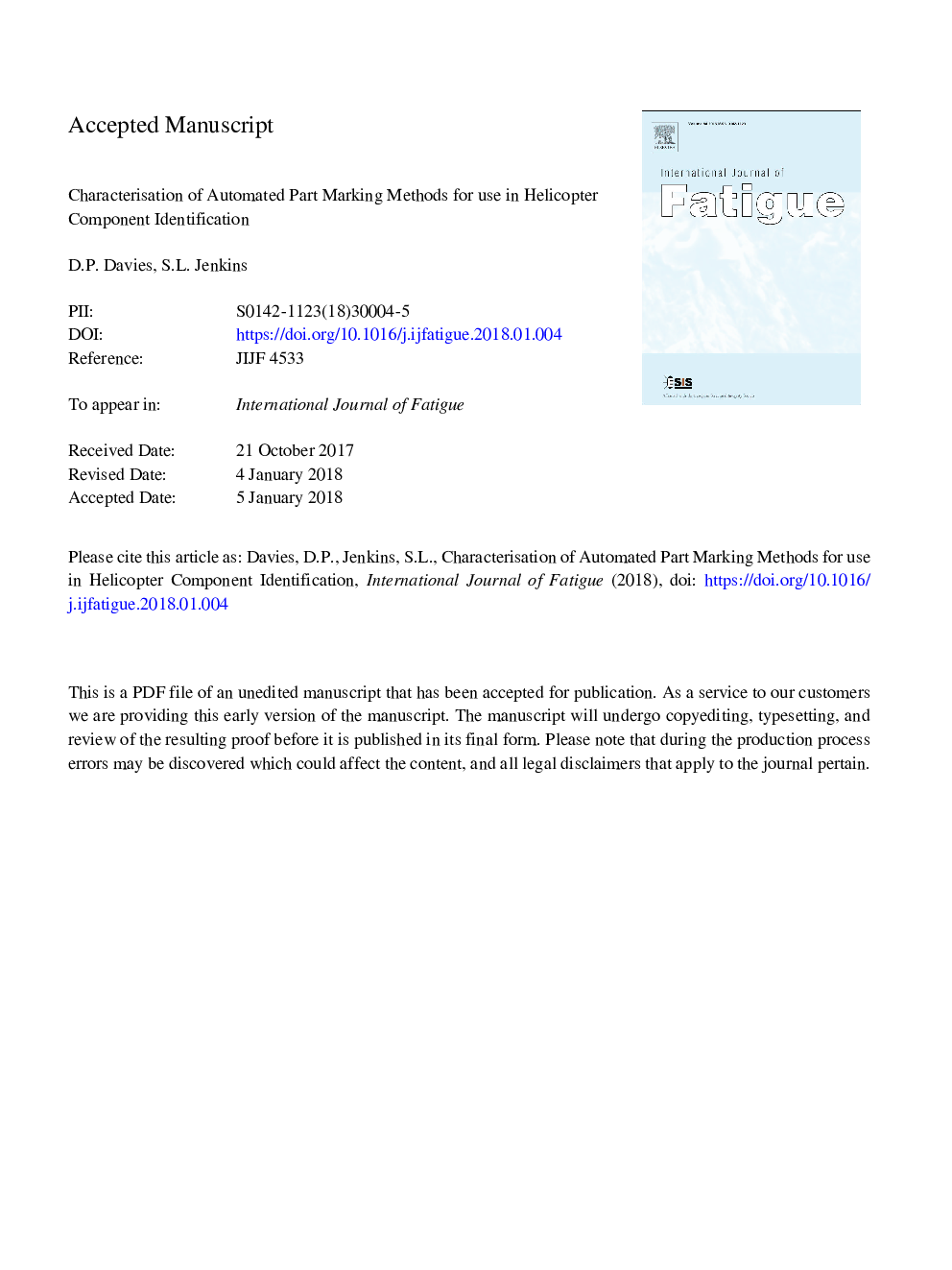| Article ID | Journal | Published Year | Pages | File Type |
|---|---|---|---|---|
| 7171522 | International Journal of Fatigue | 2018 | 26 Pages |
Abstract
Based on the results of a process assessment carried out on several automated part marking methods, namely laser, DOT peen, diamond engraving and milling, all the methods produced a high degree of legibility which would be acceptable for identifying aerospace components. In the case of the mechanical part marking methods, whilst the depth of marking has been shown to influence fatigue failures, ie the greater the depth the greater the likelihood of failures initiating from the part marking, this does not necessarily result in a reduction in fatigue endurance, as all the mechanical methods assessed produced high levels of compressive residual stresses from the part marking process, which largely counteract the effect of depth within the High Cycle Fatigue (HCF) regime. Nevertheless, depth of marking should always be kept to a minimum comensurate with legibility. Although tensile residual stresses were generated by the laser part marking, how this influenced fatigue endurance was a function of the substrate, e.g. fatigue failures of the steel samples were independent of applied stress, while with the aluminium samples failures occurred over the whole stressing regime and hence were responsible for lowering HCF. The reason for the different response between the different metallic materials was that the depth of marking was deeper and as a consequence the ratio between the depth of marking and thickness of the sample was higher and the level of heat damage was more severe. The importance of heat damage and in particular the presence of microcracking was considered to be far more deterimental to HCF than either the presence of tensile residual stresses or phase transformation. Hence, if a laser is to be used for part marking components then the processing parameters should be carefully selected in order to prevent the formation of microcracking and limit the depth of marking.
Related Topics
Physical Sciences and Engineering
Engineering
Mechanical Engineering
Authors
D.P. Davies, S.L. Jenkins,
